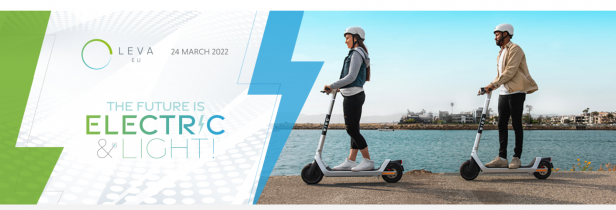Smart mobility and LEV’s: a general introduction
#Smart-Mobility is an important aspect for daily life and commuting/recurrent transportation needs and in this day&age there are many potential solution(s) for smart-mobility in Amsterdam. Today some of these new vehicles types are mostly restricted on city streets and Amsterdam citizens cannot grasp the potential of this vehicles. These devices can go up to at least 20km of range for short trips and with vehicle speeds ranging from 20, 25, 45 km/h (e-scooter, e-bike, moped respectively) and some as far as 90km/h (micro-car 90), etc.
Potential CO2 emission reduction research
There is a study regarding CO2 potential emission reduction by the use of light electric vehicles (LEV's) in contrast to short car trips usage. LEV's CO2 emissions is averaged at 24g CO2 eq/km compared with conventional vehicles (including EV's) averaged at 203g CO2 eq/km. The findings are quite relevant since it could reduce CO2 emissions as much as 44% = 57 million tones CO2 eq per year. The full study can be found at URL link below.
Proposal
If the Gemeente Amsterdam would lift the ban on LEV’s, this would be beneficial for Amsterdam citizens since they would have less noise (silent devices), cleaner air (by the study analysis) and maybe more fun alternative to ICE-scooters and cars.






Hi @Jan, the full report already mentions this details and while it is true that LEV's need some resources, for example battery comparison alone LEV's have a capacity ranging from 0.4kWh to 10kWh (avg.) versus EV 50kWh (avg.) the difference is significant.
For space requirements, the full report also mentions this because LEV's have a smaller footprint, e.g. even size comparison between e-step and bicycle, e-step can fit in most [stock] car trunks while bicycle needs bicycle-rack.
As for energy, also mentioned in the report, LEV's range from 0.3 kWh/100km, 1.1kWh/100km, 7.2kWh/100km (e-bike, e-step, microcar 90, respectively) versus EV which is (avg.) 150kWh/km, (aka more than x100).
Regards.
This all depends on your starting point. If you see LEVs as replacing cars, they might have a positive effect indeed. If this is true, there should be some empirical evidence for this, since LEVs are legal in a great number of European cities. A scenario study full of assumptions is not convincing as far as I am concerned. What's more, if LEVs are used for new trips, or trips that are now done on foot, the positive effects disappear completely. LEVs consume materials, energy and space. These are scare resources that we should handle carefully.